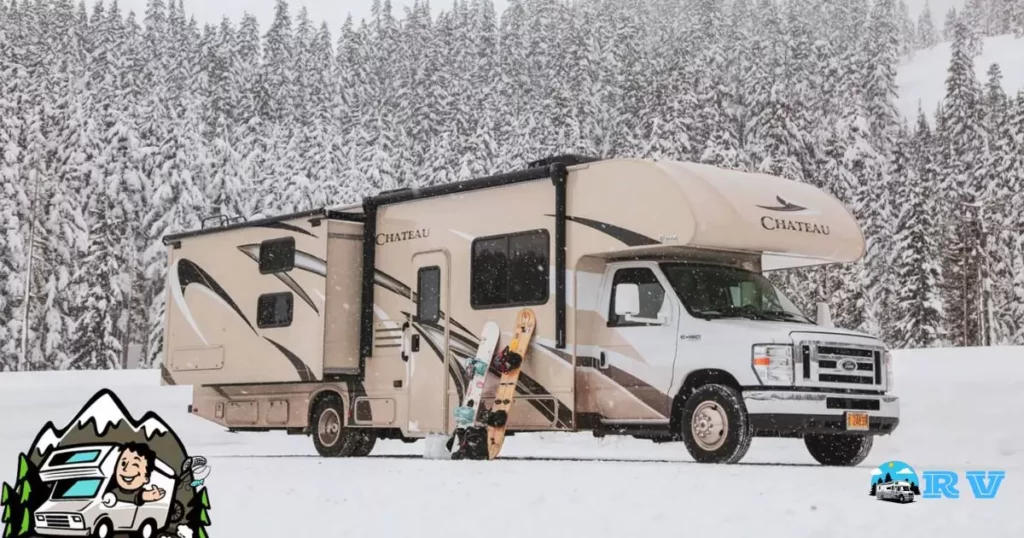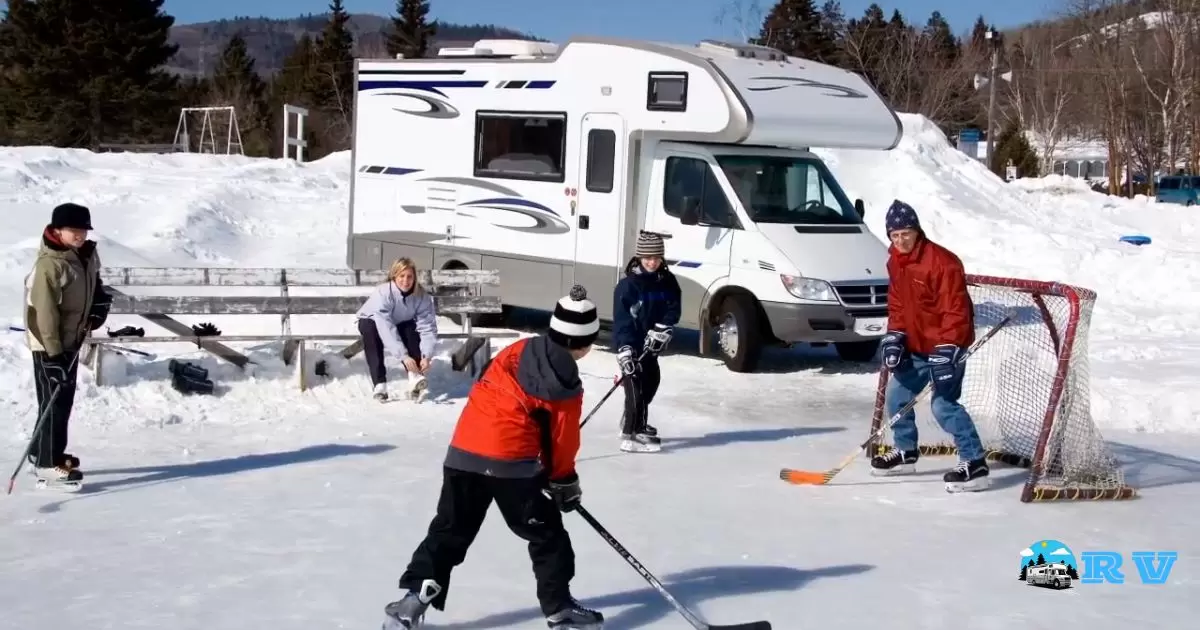Are you wondering how to make your own RV winterizing kit? A DIY RV winterizing kit is a collection of tools and materials that help you prepare your recreational vehicle for the cold winter months. It typically includes items like antifreeze, a water pump converter kit, and various tools necessary for the winterization process.
Now, let’s delve into the world of DIY RV winterizing kits. As the temperature drops and winter approaches, it’s essential to protect your RV from potential damage caused by freezing temperatures. Learning how to make your own RV winterizing kit is a cost-effective and practical solution. By creating your kit, you can ensure that your RV’s plumbing system is adequately protected from the harsh winter conditions.
Crafting your DIY RV winterizing kit allows you to tailor it to your specific RV’s needs. You can include items like a water heater bypass kit, a handheld air compressor, and any other tools or materials required to winterize your RV effectively. With the right components in your kit, you can save money, maintain your RV, and ensure it’s ready for your next adventure when spring arrives.
The Importance of Winterizing Your RV

Winterizing your RV is a crucial task if you want to ensure the longevity and functionality of your vehicle. When temperatures drop, the water in your RV’s plumbing system can freeze, leading to cracked pipes, damaged fittings, and costly repairs. By learning how to make your own RV winterizing kit, you can take control of the winterization process and potentially save a substantial amount of money.
Teaser about Creating Your Own Kit
Creating your own RV winterizing kit allows you to tailor it to your specific needs and the unique requirements of your RV. Whether you have a motorhome, travel trailer, or camper, you can customise your kit to ensure a thorough and effective winterization process. Plus, by assembling your kit, you gain a deeper understanding of your RV’s plumbing system and how to care for it. Start by understanding the components of a typical RV winterizing kit.
Understanding the Components
Before you can start making your own RV winterizing kit, it’s essential to understand the key components that are typically included in such kits. Each component serves a specific purpose in protecting your RV from the cold weather. Here’s an overview of these essential components:
Antifreeze
Antifreeze is a crucial component of any RV winterizing kit. It’s used to protect your RV’s plumbing system from freezing by displacing water. There are two types of antifreeze. non-toxic RV antifreeze for the plumbing system and automotive antifreeze for the engine. You’ll need the RV specific antifreeze for winterization.
Water Pump Converter Kit
The water pump converter kit allows you to bypass the fresh water tank and draw antifreeze directly into your RV’s plumbing system. This kit is essential for an efficient winterization process.
Air Compressor
An air compressor, either handheld or portable, is used to blow out any remaining water from the plumbing lines after draining the system. This step helps prevent any residual water from freezing.
Blow-Out Plug
A blow-out plug is used in conjunction with the air compressor to create an airtight connection with your RV’s water lines. This ensures an effective blow-out of any remaining water.
Basic Tools
Various basic tools such as pliers, a screwdriver, and a wrench may be needed for tasks like removing drain plugs and accessing various parts of your RV’s plumbing system.
Now that you have a clear understanding of the key components let’s move on to the next step: gathering the essential tools and materials for your DIY RV winterizing kit.
Gathering the Essential Tools and Materials
Creating your DIY RV winterizing kit requires careful selection of tools and materials to ensure a thorough and effective winterization process. Here’s a list of the essential items you’ll need to get started:
Tips for Selecting High-Quality Components
When selecting the components for your DIY RV winterizing kit, it’s essential to choose high-quality items to ensure a successful winterization process. Here are some tips to keep in mind.
Antifreeze: Ensure you choose RV-specific, non-toxic antifreeze. Automotive antifreeze is not suitable for this purpose.
Water Pump Converter Kit: Look for a kit that is compatible with your RV’s water pump and plumbing system.
Air Compressor: If you’re using an air compressor, make sure it has enough pressure to effectively blow out the water lines.
Blow-Out Plug: Check that the blow-out plug is compatible with your RV’s water line connections.
Basic Tools: Invest in good-quality tools to make the winterization process smoother and more efficient.
Cost-Saving Advantages of Creating Your Own Kit
One of the significant advantages of making your DIY RV winterizing kit is the potential cost savings. Pre-made kits can be expensive, and they often come with items you may not need. When you create your kit, you can control your expenses by only purchasing the components required for your specific RV.
This not only saves money but also ensures that you have exactly what you need to protect your RV from winter’s chill. Now that you’ve gathered the necessary tools and materials, it’s time to move on to the practical aspect of building your DIY RV winterizing kit.
Building Your DIY RV Winterizing Kit
Building your DIY RV winterizing kit is a straightforward process, and we’ll guide you through it step by step. By the end of this section, you’ll have a well-organized kit ready for use.
Acquire the Components
Start by acquiring the components listed in the previous section. Ensure that you have RV-specific antifreeze, a water pump converter kit, an air compressor, a blow-out plug, and the necessary basic tools.
Assemble the Components
Organise your components in a storage container or toolbox. This ensures that everything is easily accessible when you’re ready to winterize your RV. Labelling or categorising the items can also be helpful.
Customise for Your RV
Depending on the type and size of your RV, you may need additional components or specific fittings. Customise your kit to suit your RV’s unique requirements.
Store Properly
Store your DIY RV winterizing kit in a dry, cool place, away from direct sunlight or extreme temperatures. Proper storage ensures that the components remain in good condition and ready for use when needed.
With your DIY kit assembled, you’re now prepared for the winterization process itself. Let’s move on to the next section and explore how to use your DIY RV winterizing kit effectively.
Using Your DIY RV Winterizing Kit
Now that you have your DIY RV winterizing kit ready, it’s time to put it to use. Here, we’ll provide a step-by-step guide on how to effectively winterize your RV using the kit you’ve created and answer the question of how much it cost to winterize an RV. Proper winterization ensures that your RV’s plumbing system is protected from freezing temperatures.
Drain the Water System
Begin by draining the fresh water tank, water heater, and all water lines. Open all faucets and valves to allow water to flow out completely.
Bypass the Water
Heater
Use the water pump converter kit to bypass the water heater. This prevents antifreeze from entering the heater, saving you from using excess antifreeze.
Connect Your Air Compressor
Connect your air compressor, along with the blow-out plug, to the city water inlet of your RV. Ensure a secure connection.
Blow Out the Water Lines
With the air compressor turned on, blow out the water lines by opening each faucet and valve one by one. Start from the farthest point from the city water inlet and work your way closer.
Add Antifreeze
Once the water lines are blown out, it’s time to introduce antifreeze. Use the water pump converter kit to draw antifreeze directly into the plumbing system.
Sanitise the Holding Tanks
To prevent any unpleasant odours or tastes when you use your RV again, consider sanitizing the holding tanks. Follow the manufacturer’s instructions for this step.
Recap and Seal
Close all faucets, valves, and the city water inlet. Make sure everything is properly sealed to prevent any air or antifreeze from escaping.
By following these steps, you’ll effectively winterize your RV and protect it from the freezing temperatures. Keep in mind that the exact steps may vary slightly based on your RV’s make and model, so always refer to your RV’s owner’s manual for specific instructions.
Common Mistakes to Avoid
While winterizing your RV, there are some common mistakes that you should be aware of and take steps to avoid. These mistakes can lead to incomplete winterization and potential damage to your RV’s plumbing system. Here are a few key errors to watch out for:
Using the Wrong Antifreeze
Always use RV-specific, non-toxic antifreeze. Using automotive antifreeze can be harmful to your RV’s plumbing system and your health.
Inadequate Blow-Out
Ensure that you blow out all the water from your plumbing lines. Incomplete blow-out can lead to freezing and damage.
Missing Water Heater Bypass
Failing to bypass the water heater can lead to excessive antifreeze usage. Use the water pump converter kit to do this.
Incorrectly Sealing Faucets and Valves
Properly seal all faucets and valves after introducing antifreeze to prevent air from entering the system.
Skipping Tank Sanitization
Sanitising your holding tanks is an essential step to ensure clean and fresh water for your next RV adventure.
Benefits of a DIY RV Winterizing Kit
Creating your own RV winterizing kit offers numerous benefits, making it a practical and cost-effective choice for RV owners. Let’s explore these advantages in more detail.
Cost Savings Compared to Purchasing Pre-Made Kits
Pre-made RV winterizing kits can be relatively expensive. When you make your kit, you can save money by purchasing only the components you need, without the extra costs of items you might never use.
Tailoring the Kit to Your Specific RV’s Needs
Every RV is unique, and different types and sizes have varying plumbing systems. By creating your own kit, you can customise it to suit your RV’s specific requirements, ensuring a more efficient and thorough winterization process.
Gaining a Deeper Understanding of Your RV’s Plumbing System
As you gather the components and perform the winterization process, you gain a deeper understanding of your RV’s plumbing system. This knowledge can be invaluable for troubleshooting issues and conducting regular maintenance.
FAQs
What are the main components of an RV winterizing kit?
An RV winterizing kit typically includes antifreeze, a water pump converter kit, an air compressor, a blow-out plug, and basic tools.
How can I save money by making my DIY RV winterizing kit?
By creating your own kit, you can avoid the extra costs associated with pre-made kits and purchase only the components you need.
Why is it essential to use RV-specific antifreeze for winterizing?
Using RV-specific antifreeze is vital because it is non-toxic and safe for your RV’s plumbing system, unlike automotive antifreeze.
What’s the purpose of a water pump converter kit in the winterization process?
The water pump converter kit allows you to bypass the water heater, saving antifreeze and ensuring efficient winterization.
What’s the benefit of gaining a deeper understanding of your RV’s plumbing system?
Understanding your RV’s plumbing system helps with troubleshooting and regular maintenance, ultimately extending the life of your RV.
Conclusion
In a nutshell, making your DIY RV winterizing kit is a smart move. It’s a cost-saving, customised solution that equips you with the know-how to protect your RV from the winter chill. With the step-by-step guidance provided here, you’re all set to take control of your RV’s winterization process. Go ahead, gather your tools, create your kit, and ensure your RV stays in great shape for the winter season and beyond.
By building your kit, you not only save money but also gain valuable insights into your RV’s plumbing system. This newfound knowledge will serve you well as you maintain and care for your vehicle. So, embrace the DIY spirit, protect your RV, and look forward to many more adventures in all seasons.











